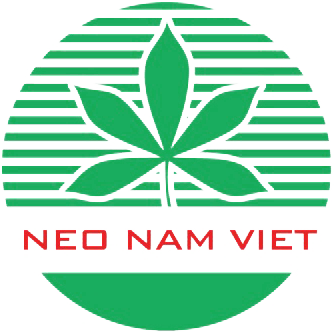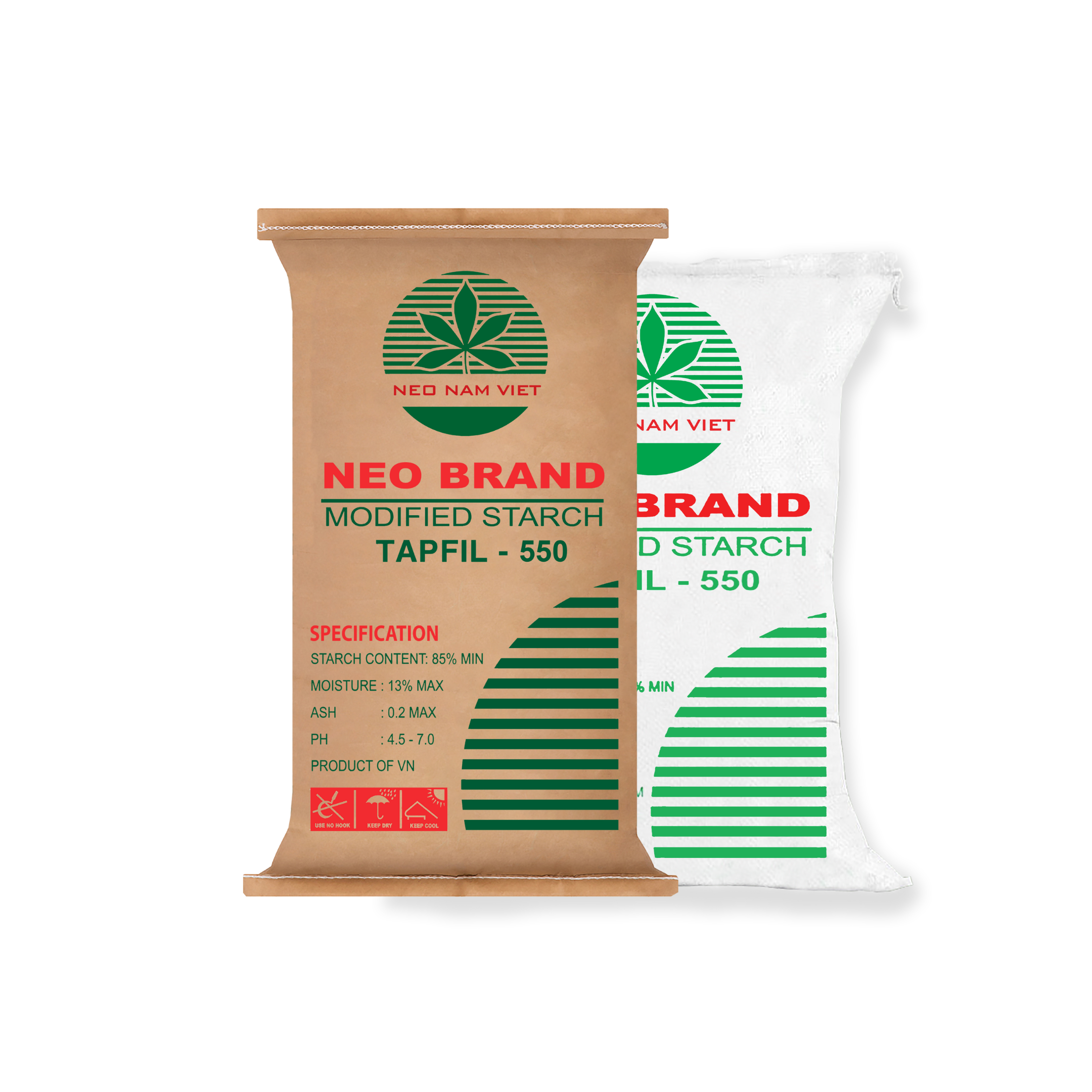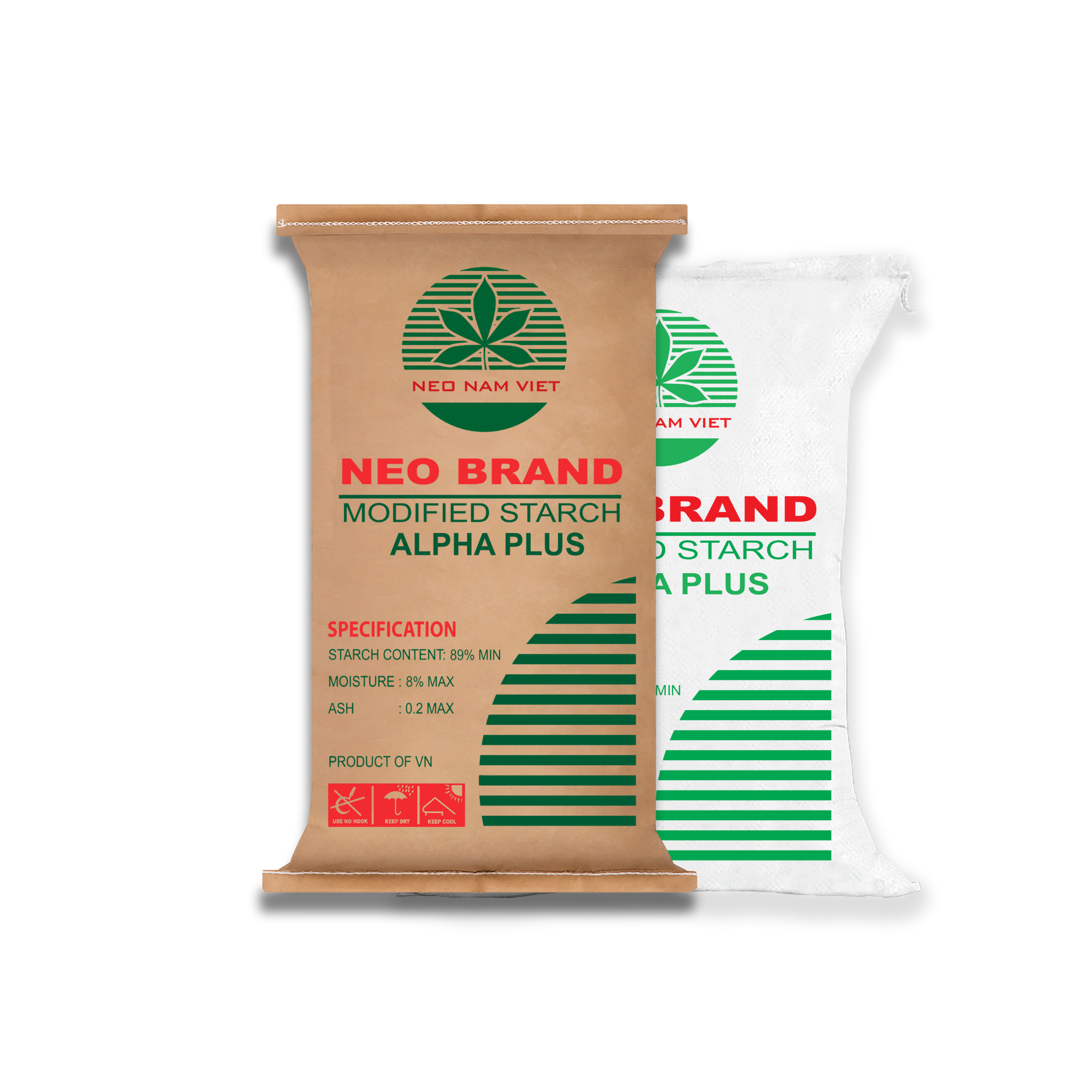- OVERVIEW OF MODIFIED TAPIOCA STARCH
Modified tapioca starch is a type of starch that has been modified by physical and chemical methods to enhance or adjust specific properties such as viscosity, substitution, adhesion and gelatinization temperature.
- APPLICATION OF MODIFIED TAPIOCA STARCH
Producing products such as chili sauce, ketchup, boxes, instant noodles, vermicelli, vermicelli, frozen food, fried fish balls.
- NEO NAM VIET CO., LTD specializes in providing modified tapioca starch, including:
Acetylated Starch (E1420); Acetylated Distarch Adipate (E1422); Acetylated Distarch Phosphate (E1414); Oxidized Starch (E1404); Acetylated Oxidized Starch (E1451); Hydroxypropyl Starch (E1440); Hydroxypropyl Distarch Phosphate (E1442); Pregelatinized Stars.
















